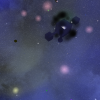Blogs
GPU Voxel Downsampling with Compute Shaders
GPU Voxelization
Cyclone Is Coming Soon to Steam!
Sparse Voxel Octree Raycasting
Sparse Voxel Octree Downsampling
Sparse Voxel Octree Reflections
Finished Direct Lighting Step
My game in development | Astrocuco
Vulkan Dynamic Rendering
Storing game data (using sqlite3)

aiaf in programming





